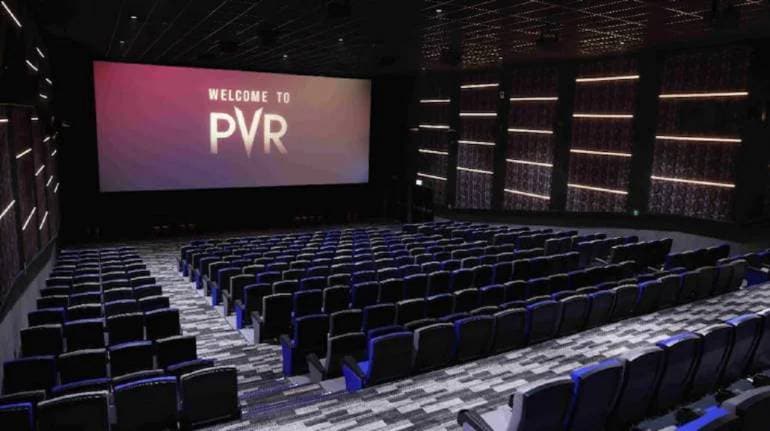



Top multiplexes are aggressively expanding their screen portfolio, with screen additions expected to see 30-60 percent growth in the next two years compared to pre-pandemic levels.
Recent launches by theatre chains like the merged entity PVR-Inox and Cinepolis have been focussed on superplexes — properties with 10 or more screens in different premium formats.
PVR-Inox launched its first superplex in Lucknow, which started operations in February this year. Next, it will launch superplexes in Pune and Bengaluru. Last month, Cinepolis too launched a superplex in Delhi. The exhibitor aims to add 200 screens in the next three years.
More screens“PVR-Inox has mentioned that they intend to add 175 screens in FY23-24, with the smaller chains adding another 50-100. This could take the net additions to around 250-300 screens in FY23-24,” said Nitin Menon, Managing Partner, NV Capital.
Multiplex operators are expected to have a capex outlay of Rs 800-900 crore for new screen additions, said Naveen Vaidyanathan, Director, CRISIL Ratings.
“Screen growth will be higher than pre-Covid levels, the reason being that there was no expansion due to Covid in 2020 and 2021. In 22-23 too, fewer screens were launched compared to pre-pandemic levels. As cash flows ease and lenders start trusting the industry once again, companies will be able to start rolling out screens that are in the pipeline,” said Amit Sharma, MD, Miraj Entertainment.
He added that there are many cinemas that are ready for fit-outs, which refers to refurbishing an existing theatre.
“Between 2023-2025, there will be aggressive screen expansion. Pre-pandemic, we (multiplexes) were operating 3,000 screens. That number currently stands at 3,500. India was adding 300-odd screens annually pre-Covid. This will increase to 400-500 screens, which means multiplex chains will add 800-1,000 screens in the next two years,” Sharma added.
The PVR-Inox merger has set the ball rolling in terms of screen expansion, said Menon.
One of the highlights of the PVR-Inox merger was the screen expansion plans of the merged entity, which involved doubling the combined pipeline to 2,000 screens, to be added over the next seven years with an investment of Rs 4,000 crore.
PVR-Inox plans to invest around Rs 500 crore in expanding its portfolio by adding 175 screens in the next financial year, said Sanjeev Kumar Bijli, Executive Director, PVR, in a recent interview with Moneycontrol.
Cinepolis plans to add 60 screens a year on average, with an investment of Rs 3 crore per screen.
"This financial year we opened 30 screens and as we speak, there are around 20 screens waiting for their license. So, the opening of some of the screens can spill over to FY23-24. We have taken 24-25 screens for fitout. We should be taking 50-70 screens for fitout between April to June. So, we will be adding 80-100 screens in the next 12 months. We will be investing close to Rs 200 crore through internal accruals and bank loans, " said Sharma.
Another multiplex player, Mukta A2 Cinemas, plans to add 50 screens in FY23-24, with a total investment of Rs 38 crore.
“I think FY23-24 is when you will see the market picking up substantially. This is evident in the plans of firms like PVR-Inox, which plans to add a substantial number of new screens,’’ said Menon.
The Covid pandemic had led to the closure of 1,500-2,000 single-screen cinemas that were struggling to make profits, said Vaidyanathan. “The opening of new multiplexes and conversion of single-screens to multiplexes will increase the latter’s share of overall screens to 50 percent by the end of next fiscal, compared with 30 percent before the pandemic,” he added.
Overall, the total number of operational screens has reached the 9,000- 9,500 mark, said Menon.
More cinemas in smaller marketsSharma said that screen additions are directly proportional to the supply of real estate, and the maximum supply is in NCR, Lucknow, and Mohali. “Down south, it is Hyderabad and Bengaluru which have a lot of real estate. We don’t see too many screens coming up in saturated markets like Mumbai and Pune.”
South and west India have more screens as compared to the north, said Menon. “The demand for screen additions is more in tier 2 and 3 cities, with a sizable population lacking entertainment options.”
Along with smaller markets, Vaidyanathan said that with some premium multiplexes succeeding in metros, more are being planned in those markets.
Sharma pointed out that screen growth in India will come entirely from the multiplex segment. “I don’t see any new single screens popping up. They can only be refurbished.”
India is not like China, where in a single year they can add anywhere between 5,000-8,000 screens, said Menon. “In India, the screen growth is still very linear and organic, unlike China,” he added.
Discover the latest Business News, Sensex, and Nifty updates. Obtain Personal Finance insights, tax queries, and expert opinions on Moneycontrol or download the Moneycontrol App to stay updated!
Find the best of Al News in one place, specially curated for you every weekend.
Stay on top of the latest tech trends and biggest startup news.